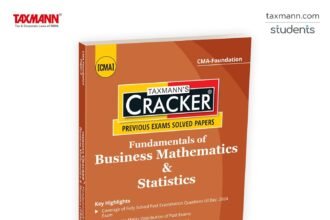In a world characterized by rapid technological advancement, blockchain stands out as a transformative force, not just within financial systems, but across diverse industries. Initially introduced as the underlying technology for Bitcoin in 2008, blockchain has quickly evolved beyond cryptocurrency, promising a plethora of applications that can revolutionize how we conduct transactions, store data, and validate identities.
What is Blockchain?
At its core, blockchain is a decentralized ledger technology that records transactions across multiple computers in such a way that the registered transactions cannot be altered retroactively. This ledger is made up of blocks that are securely linked to one another through cryptographic hashes, creating a chain of records that is both transparent and tamper-proof.
Key Features of Blockchain
-
Decentralization: Unlike traditional databases that are controlled by a central authority, blockchain operates on a peer-to-peer network. This decentralization disperses control, reducing the risk of fraud and corruption while increasing transparency.
-
Transparency: Each participant on the network can access the complete history of transactions, fostering trust among users. This transparency is crucial for industries like finance and supply chain management, where tracking the provenance of assets is paramount.
-
Immutability: Once a transaction is recorded on the blockchain and confirmed by the network, it becomes virtually impossible to alter or delete. This characteristic significantly reduces the potential for fraud.
- Security: Through cryptographic techniques, blockchain ensures that each piece of data is secure and linked to its preceding record. This security mechanism protects against unauthorized access and ensures the integrity of data.
Revolutionizing Finance
The initial use of blockchain for cryptocurrencies like Bitcoin laid the groundwork for its applicability in finance. Financial institutions are increasingly adopting blockchain to improve efficiency and reduce costs:
-
Cross-border Transactions: Traditional banking systems rely heavily on intermediaries for cross-border payments, which can be slow and costly. Blockchain streamlines these transactions by allowing direct transfers between parties, significantly reducing fees and processing time.
-
Smart Contracts: These self-executing contracts with the terms of the agreement directly written into code are gaining traction. Smart contracts automate and secure transactions, eliminating the need for intermediaries and minimizing the potential for disputes.
- Fraud Mitigation: Financial institutions are leveraging blockchain to combat fraud. By having an immutable digital record, banks can track all transactions and identify discrepancies in real-time.
Beyond Finance
While blockchain has made significant inroads in the financial sector, its potential extends far beyond:
-
Supply Chain Management: Blockchain offers greater transparency and traceability in the supply chain. Companies can track the journey of their products in real-time, ensuring authenticity and ethical sourcing.
-
Healthcare: Patient records stored on blockchain can enhance data security and privacy while allowing for seamless sharing among healthcare providers. This can lead to improved patient outcomes and more coordinated care.
-
Voting Systems: Blockchain can provide a secure and transparent voting system, reducing the risk of fraud and increasing public trust in electoral processes.
- Intellectual Property: Artists and creators can register their work on a blockchain, providing them with a secure and verifiable method of protecting their intellectual property rights.
Challenges to Overcome
Despite its potential, blockchain technology faces several challenges:
-
Scalability: As the number of transactions grows, many current blockchain systems struggle to maintain speed and efficiency. Solutions are being developed to address scalability issues.
-
Regulatory Hurdles: Government regulations regarding blockchain and cryptocurrencies can vary widely between jurisdictions, complicating implementation and adoption.
- Energy Consumption: Some blockchain networks require a significant amount of computational power, leading to concerns over their environmental impact.
Conclusion
Blockchain is more than just a buzzword; it is a technology poised to redefine how we engage in transactions and manage data. Its decentralized nature promotes trust, security, and efficiency, making it a valuable asset across numerous sectors beyond finance. As industries continue to explore its capabilities, the true potential of blockchain is likely to unfold, heralding a new era of digital innovation.
FAQs
Q1: What is blockchain used for?
A1: Blockchain can be used in various applications including cryptocurrencies, supply chain management, healthcare, voting systems, and intellectual property rights protection.
Q2: How does blockchain ensure security?
A2: Blockchain uses cryptographic techniques to secure data and link each block to the previous one, making the entire chain resistant to tampering.
Q3: Is blockchain technology environmentally friendly?
A3: Some blockchain networks consume significant energy, particularly those relying on proof-of-work systems. However, alternatives like proof-of-stake are being developed to reduce energy consumption.
Q4: What are smart contracts?
A4: Smart contracts are self-executing contracts with the terms directly written into code. They automatically enforce and execute terms when predefined conditions are met.
Q5: Can blockchain be hacked?
A5: While the decentralization and cryptographic security of blockchain make it highly resistant to hacking, vulnerabilities can exist in other areas of the system, such as wallets and exchanges.











